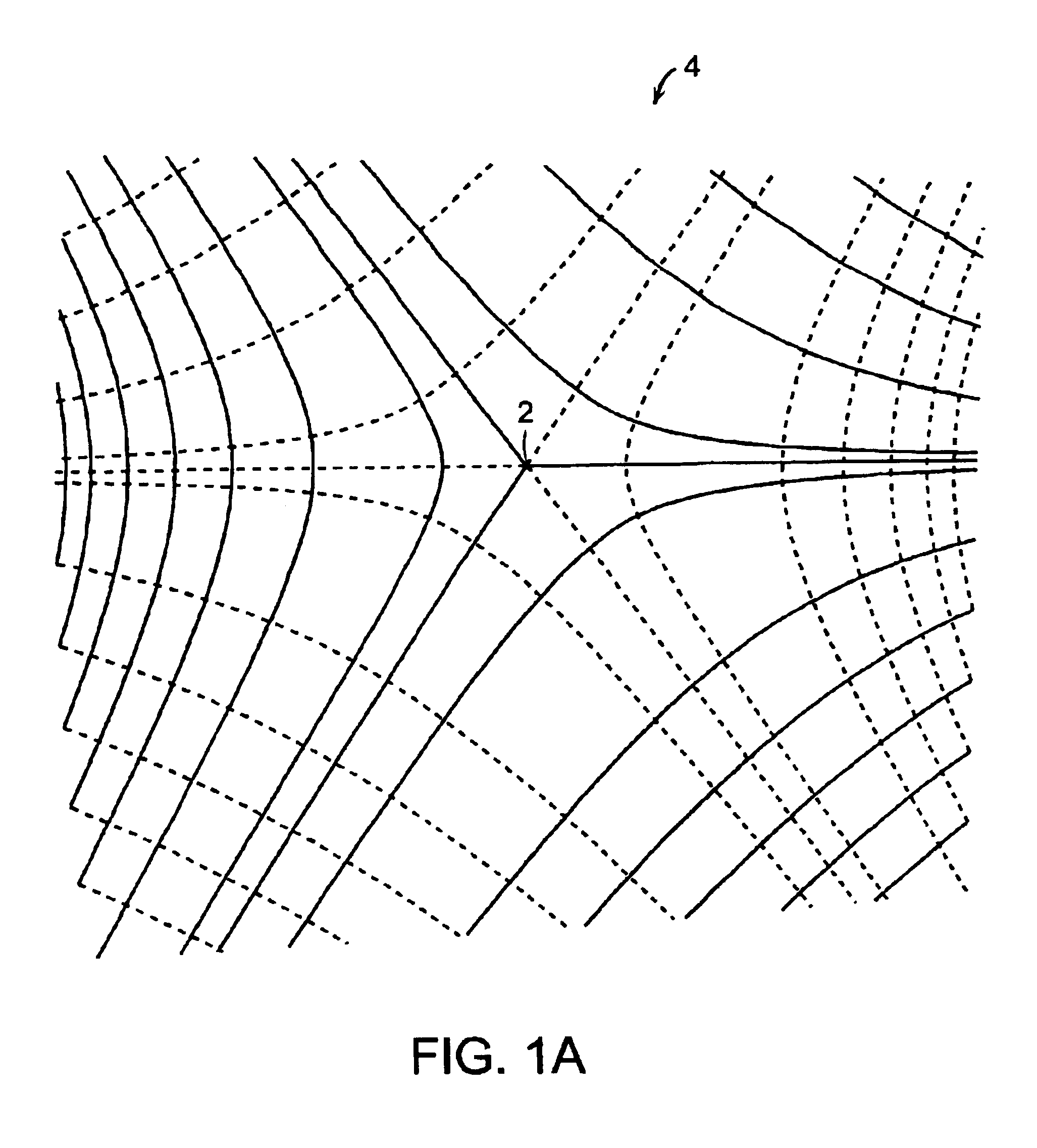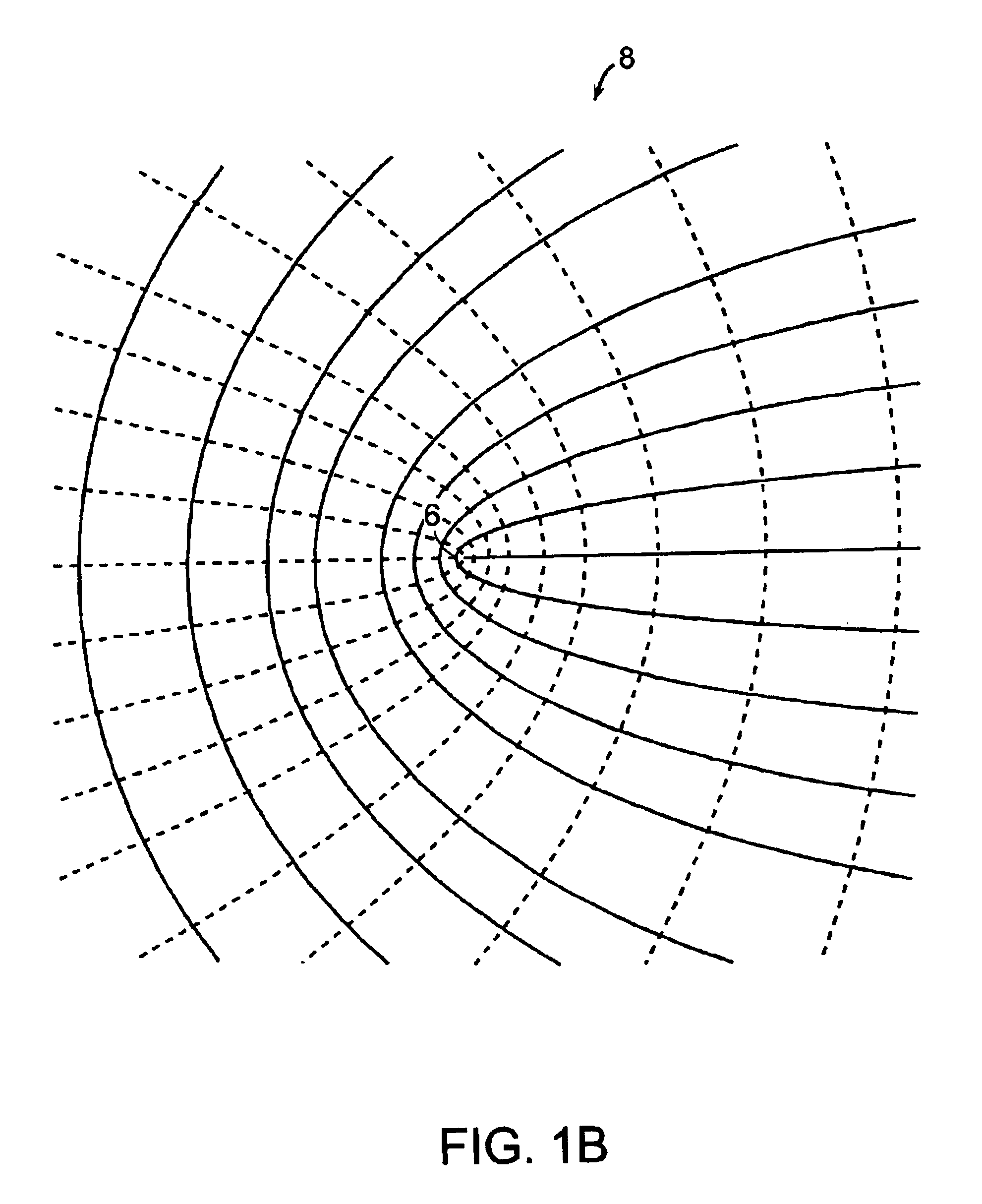Shape-intrinsic watermarks for 3-D solids
a watermark and shape technology, applied in the field of shape-intrinsic watermarks for 3d solids, can solve the problems of watermark destruction and the object cannot be considered to be approximately identical to the original obj
- Summary
- Abstract
- Description
- Claims
- Application Information
AI Technical Summary
Benefits of technology
Problems solved by technology
Method used
Image
Examples
examples
[0132]FIG. 4A illustrates an example using the present invention to compare two surfaces, A 150 and B 152. The lines drawn in these figures provide a perspective view of each surface 150, 152, and are not indicative of the principal lines of curvature. That is, the wireframes illustrated in these figures are not intrinsic to the surfaces, and may depend on parameterization of the surfaces.
[0133]FIG. 4B illustrates the same surfaces A 150 and B 152 as FIG. 4A, with control points indicated. The control points together with knot vectors define B-spline surfaces. FIG. 4B clearly shows that the same shape can be expressed by different sets of control points. Some methods for watermarking hide information in the control points. This information can be easily lost by using a different set of control points.
[0134]FIGS. 4C through 4E illustrate the various transformations performed on surface B in step 108 of FIG. 3A. In FIG. 4C, surface B is translated, as indicated by arrow 156, such that...
PUM
 Login to View More
Login to View More Abstract
Description
Claims
Application Information
 Login to View More
Login to View More - R&D
- Intellectual Property
- Life Sciences
- Materials
- Tech Scout
- Unparalleled Data Quality
- Higher Quality Content
- 60% Fewer Hallucinations
Browse by: Latest US Patents, China's latest patents, Technical Efficacy Thesaurus, Application Domain, Technology Topic, Popular Technical Reports.
© 2025 PatSnap. All rights reserved.Legal|Privacy policy|Modern Slavery Act Transparency Statement|Sitemap|About US| Contact US: help@patsnap.com



